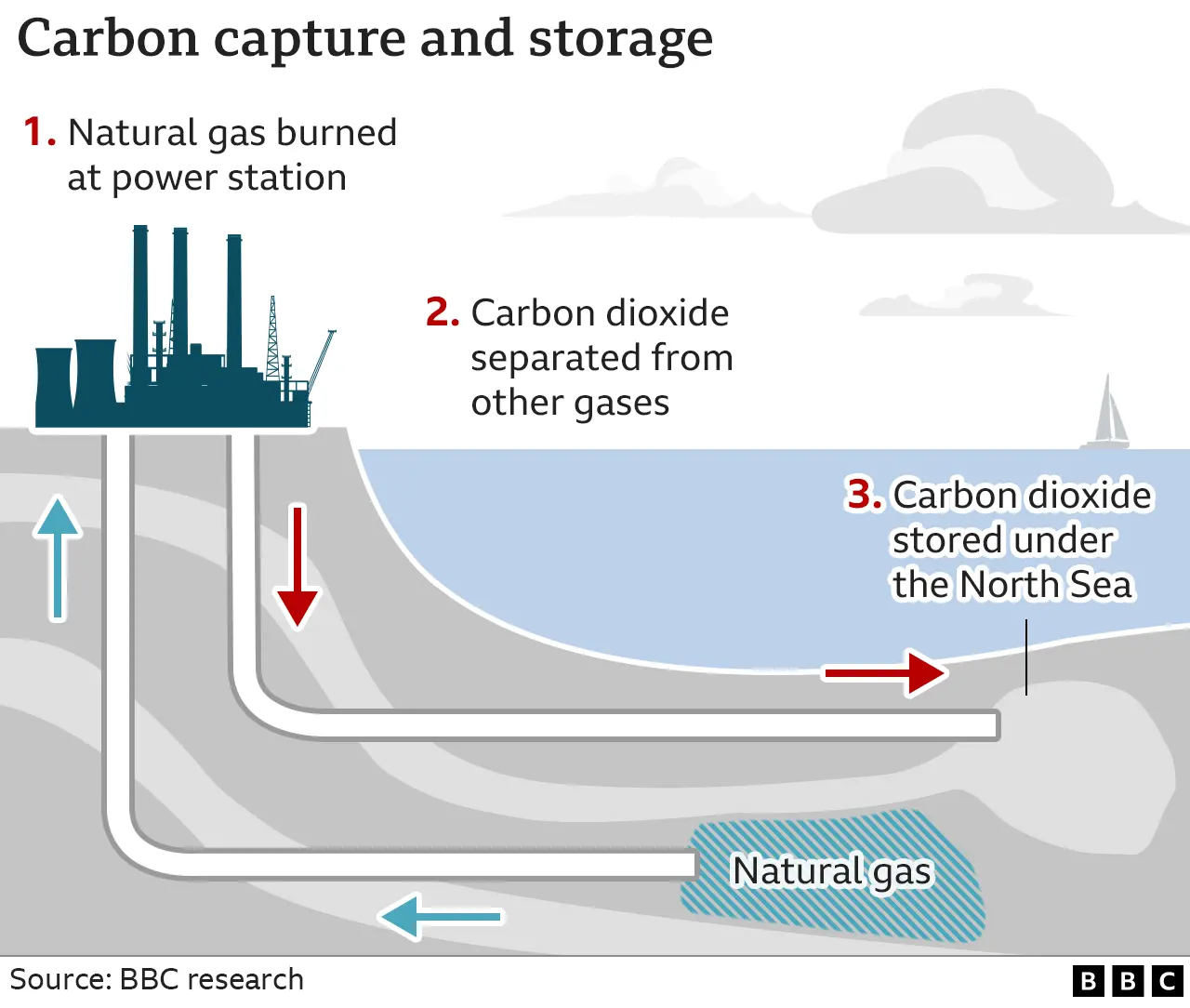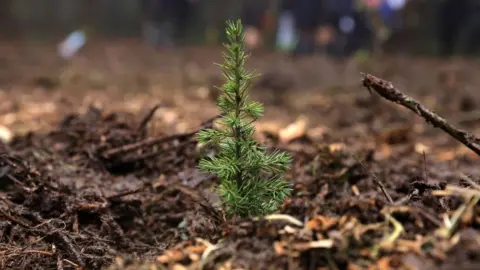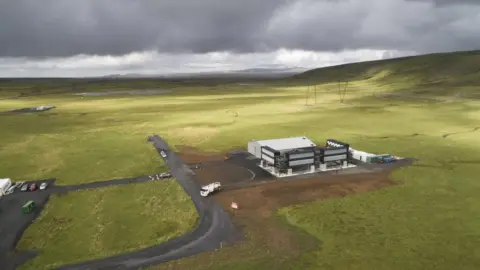What is carbon capture and how does it fight climate change?
 Getty Images
Getty ImagesThe future of fossil fuels - particularly whether to agree to phasing out coal, oil and gas - is arguably the key issue of the COP28 climate summit in Dubai.
Any agreement is likely to rely on ambitious measures to capture and remove carbon dioxide (CO2) - the main gas responsible for global warming.
Techniques range from capturing CO2 before it is released at power stations and storing it deep underground, to using trees or machines to suck CO2 directly out of the air.
Here's a quick guide to the different types of carbon capture and removal, why they are needed, and their limitations.
What is carbon capture and storage and how does it work?
Carbon capture and storage facilities aim to prevent CO2 produced from industrial processes and power stations from being released into the atmosphere.
Most of the CO2 produced is captured, transported, and then stored deep underground.

The UK has plans for several carbon capture projects as part of its pledge to capture and store 20-30 million tonnes of CO2 a year by 2030.
The European Union aims to have capacity to capture and store 50 million tonnes a year by 2030, while the United States has also boosted funding.
What is carbon dioxide removal?
Carbon dioxide removal is where CO2 already in the air is taken out and stored.
There are two main approaches.
Firstly, humans can try to increase the CO2 taken up by the natural world. For example, one global initiative aims to conserve, restore and plant one trillion trees worldwide by 2030.
 EPA
EPAThe land and ocean take up more than half the CO2 that humans emit anyway, so carbon removal refers to the extra CO2 that is taken up due to deliberate action by people.
Secondly, there are "novel" human-designed methods to take CO2 out of the atmosphere, although these are at very early stages.
These include machines to directly capture CO2 from the air, or processes involving growing plants, burning them or converting them into fuels, and capturing and storing their emissions. Novel methods the BBC has looked at include a massive seaweed farm in the South Atlantic Ocean and a process known as enhanced rock weathering.
All of the different carbon removal methods are "negative emissions" technologies, because they take CO2 out of the atmosphere - unlike carbon capture, which simply reduces the amount of CO2 being released.
Why are carbon capture and carbon dioxide removal needed?
To avoid the most dangerous impacts of climate change, around 200 countries agreed to try to limit long-term warming to 1.5C above pre-industrial levels - before humans started burning large amounts of fossil fuels.
But human activities are still emitting record levels of CO2. At the current rate, this could take the world past the 1.5C mark by 2030.
And in the coming decades people will continue to rely on activities that produce CO2, including fossil fuels for energy, even though this should fall as renewables like solar power grow. There is also no realistic way of eliminating all emissions from some sectors, like agriculture and aviation, without carbon removal.
This means the world will almost certainly need some carbon capture and removal in order to limit warming to 1.5C, according to the UN, even if governments manage to make steep cuts to emissions.
What is the problem with carbon capture and removal?
Neither approach is taking place at anywhere near the scale required to balance CO2 emissions from human activities, which exceeded 40 billion tonnes in 2022.
In comparison, carbon capture and storage currently only captures around 45 million tonnes a year. Carbon dioxide removal by artificial methods takes up even less - around 2 million tonnes a year. Both remain very expensive.
Based on projections of oil and gas use under current policies, the world would need these methods to capture and remove an "implausible" 32 billion tonnes of CO2 a year by 2050, according to the International Energy Agency.
 Getty Images
Getty ImagesCarbon dioxide removal by enhancing natural sources - like tree planting - removes an estimated 2 billion tonnes a year. But even this is outweighed by the carbon emitted from the damage to the natural world, like continued deforestation, and there are limits to how much carbon trees can take up.
For these reasons, carbon capture and removal cannot be used as an excuse to avoid rapidly reduce fossil fuel production and use, the International Energy Agency and other bodies stress.
In fact, many campaigners accuse such schemes of "greenwashing" - where governments and businesses promote their climate credentials without making the real changes needed.

More on the COP28 climate summit

